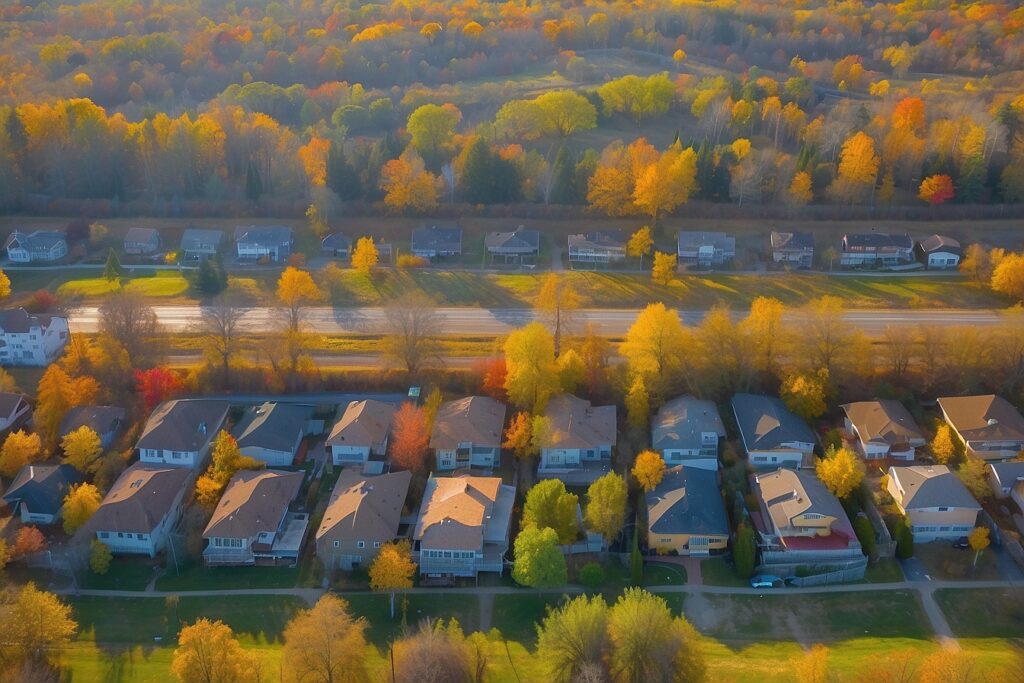U.S. Rental Market Experiences First Annual Decline in Three Years

Recent analysis from Redfin reveals a noteworthy shift in the U.S. rental market dynamics, with the median asking rent dipping by 0.4% year over year to $1,937 in March. This marks the initial annual decline observed since March 2020, signifying a notable departure from the steady upward trend witnessed in the past three years. Notably, a year earlier in March 2022, rents had surged by 17.5%.
While the median asking rent in March remained steady compared to February, it still stood considerably higher, at $322 (19.9%), than its pre-pandemic level three years earlier. However, this decline suggests a potential return to a more balanced rental market environment.
According to Dan Close, a Redfin real estate agent based in Chicago, the recent rental market adjustments indicate a normalization rather than a drastic decline. Close notes that rents had ballooned during the pandemic era and are now gradually reverting to more typical levels. He analogizes the situation to the price of eggs, indicating that rents are recalibrating to a standard range after a period of inflation.
The surge in rents over the past few years was fueled by factors such as increased household incomes and growing household formations, particularly among millennials starting families. However, the trend is now showing signs of moderation, as economic uncertainty prompts individuals to reconsider their housing choices and opt for stability.
Factors contributing to the decline in rents include a surplus of supply resulting from the pandemic-induced homebuilding boom. Notably, construction activity for multifamily units has reached unprecedented levels, with both the number of units under construction and completed units soaring to multi-decade highs. Additionally, the short-term rental market, particularly the Airbnb segment, is grappling with oversupply issues, as stricter regulations in some areas prompt hosts to adjust rents or exit the market altogether.
Moreover, persistently high rental costs, coupled with inflationary pressures, rising unemployment rates, and looming recession concerns, have collectively dampened rental demand. Consequently, rental vacancies have increased, compelling landlords to adopt strategies such as rent reductions and concessions to attract tenants amidst a softening market landscape.
Decline in Rents: Insights from 13 Major U.S. Metro Areas
Recent data reveals a notable decline in rents across several major metropolitan areas in the United States. Among the top 13 cities experiencing rent decreases are:
- Austin, TX (-11%)
- Chicago, IL (-9.2%)
- New Orleans, LA (-3%)
- Birmingham, AL (-2.9%)
- Cincinnati, OH (-2.9%)
- Sacramento, CA (-2.8%)
- Las Vegas, NV (-2.4%)
- Atlanta, GA (-2.3%)
- Phoenix, AZ (-2.1%)
- Baltimore, MD (-2%)
- Minneapolis, MN (-1.6%)
- Houston, TX (-1.5%)
- San Antonio, TX (-1.3%)
Dan Close, a Redfin real estate agent based in Chicago, provides insights into the rental market dynamics, particularly in Chicago. Close notes that during the pandemic, many individuals in Chicago ventured into becoming landlords, seeking to capitalize on the surging rental prices.
Some homeowners opted to rent out their properties instead of selling, as selling would have entailed relinquishing their advantageous mortgage rates. However, the slowing demand from homebuyers led to an influx of rental supply, providing renters with more options.
Consequently, the increased supply of rental properties in Chicago has contributed to a decline in rental prices as renters now have a broader selection to choose from.
Rent Surges in Raleigh and Cleveland: Insights from Top U.S. Metro Areas
Recent data reveals substantial increases in rental prices across various major metropolitan areas in the United States. Among the top 10 cities experiencing significant rent hikes are:
- Raleigh, NC (16.6%)
- Cleveland, OH (15.3%)
- Charlotte, NC (13%)
- Indianapolis, IN (10.5%)
- Nashville, TN (9.6%)
- Columbus, OH (9.4%)
- Kansas City, MO (8.1%)
- Riverside, CA (7.2%)
- Denver, CO (7%)
- St. Louis, MO (4.2%)
Local Redfin real estate agent Jennifer Bowers sheds light on the factors contributing to the surge in rents, particularly in Nashville. Bowers outlines three main drivers: investors, high home prices, and a robust local job market.
During the pandemic, a significant number of investors flocked to Nashville, purchasing homes and converting them into rental properties to capitalize on low mortgage rates and escalating rental demand. This influx of rental properties allowed investors to raise rents substantially. While investors have moderated their purchasing activity, they have not adjusted rental rates accordingly, leading to sustained high rents.
Additionally, the soaring prices of homes have rendered homeownership unattainable for many families, thereby driving up demand for rental properties. Moreover, the persistent elevation of mortgage rates over the past year and a half has priced out potential homebuyers, further fueling rental demand.
Despite a slight decline in mortgage rates from their fall peak, they remain significantly higher than pre-pandemic levels, resulting in substantial increases in the typical homebuyer’s monthly payments. Although home prices have started to dip on a year-over-year basis, they still stand at more than 30% above pre-pandemic levels, contributing to the ongoing pressure on rental markets.




Thank you for your sharing. I am worried that I lack creative ideas. It is your article that makes me full of hope. Thank you. But, I have a question, can you help me?